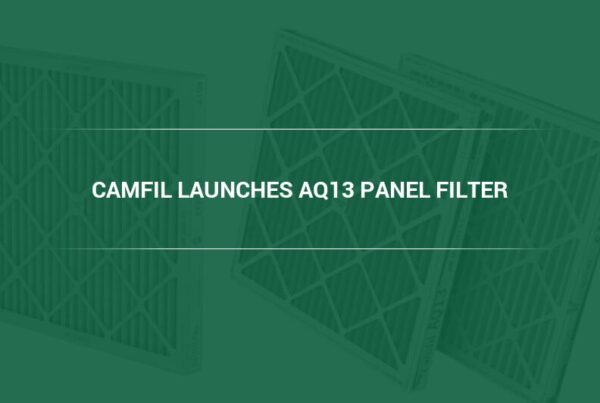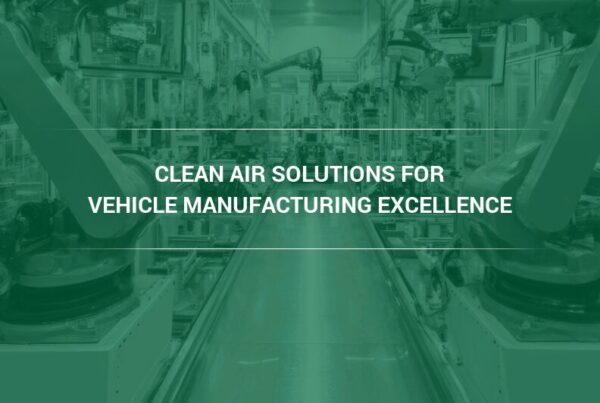How Will Smartphones Help In the Fight To Lower Air Pollution?
Learn how smart technology is being used to educate the public on the need to fight air pollution using data from nearby sites in their communities and from around the world.
The air filtration industry has done much to protect homes and buildings from the effects of outdoor air pollution. High-efficiency air filters are found in schools, airports, manufacturing facilities, and healthcare facilities. However, the reality is air filters themselves can only do so much to solve the problem of air pollution.
Today, established technology companies, startups, and universities around the world are copying the approach used to construct more efficient infrastructure, navigate complicated governmental systems and locate products and services following sustainable practices. The key is making straightforward information readily available to the public. While scientists naturally love data, the general public has an uncanny ability to realize the value of specific pieces of information, quickly discern the benefits, and put it to use.
“For example, look at the air pollution monitoring stations currently operational in the United States, which are under the umbrella of the U.S. Environmental Protection Agency (EPA),” said Camfil USA’s Mark Davidson, Manager of Marketing & Technical Materials for commercial air filters andASHRAE member and active committee participant. “There are thousands of sensors providing real-time data on key pollution metrics.”
Other organizations are now drawing inspiration from this national network of sensors and providing data with a smaller, more community-centered spin. With localized data available, people are able to adjust behavior based on information gathered from others who are nearby. For example, a pattern of air quality alerts in a community would allow residents to lower outside airflow into their buildings and activate stand-alone air purifiers with high-efficiency filters. Localized Data Equals Localized Action
Air Quality Egg is one such example of a grassroots-level air quality sensing network, designed to monitor levels of airborne pollutants. As the makers of the open-source, Internet of Things (IOT) platform claim, “With the Air Quality Egg learning system, everyone can easily conduct real scientific experiments using real-time air quality data that you, and others from around the world, collect and share.” There’s even an Air Quality Egg app, which allows smartphone users to receive alerts and updates on air pollution levels.
Likewise, Airtext provides a daily forecast of air quality, UV and pollen levels in the Greater London Area, sending text messages with alerts to smartphone users.
Although built on a much smaller scale compared to government projects, these systems excel at helping local communities make informed decisions about their health and how to protect themselves from high levels of airborne pollutants.
How Information Helps Fight Air Pollution
The problem is that air filtration only treats the symptoms of an underlying problem. It can do nothing to
address the source of air pollution. . Organizations like the World Health Organization (WHO) and the World Bank have launched campaigns to encourage legislation against air pollution, but regulations can only do so much. The continual demand for modern conveniences will always come into conflict with the demand for cleaner air and water. However, when governments and industries provide citizens with access to timely and relevant information about pollution, real actions can be taken that limit the effects of pollution on human health.
“An excellent example of a government-led information campaign with real results is the Montreal Protocol, which was instrumental in raising awareness on the ozone layer crisis,” notes Davidson. “The Protocol, in turn, was instrumental in the U.S. government’s decision to ban chlorofluorocarbons (CFCs), which were commonly found in refrigerators, aerosol cans and hairspray bottles.”
The public awareness campaign accompanying this ban was also instrumental in helping “heal” the ozone layer crisis.
The Air Pollution Crisis and Need for High-Efficiency Air Filters
It’s no secret that dirty air is recognized as a danger to human health, hence the need for high-efficiency air filters in buildings located near heavily polluted areas. According to the World Bank, air pollution-related deaths cost the global economy over $225 billion in lost labor income in 2013.
It’s no surprise why air pollution is considered the deadliest form of all types of pollution and the fourth leading cause of premature deaths around the world.
Despite the genuine and widespread danger of airborne pollutants, the subject of poor outdoor air quality and its undesirable effect on human health doesn’t seem to get the same level of attention as other health crises like smoking, obesity or cancer. Unfortunately, air pollution can often affect those among us with the least ability to demand change. Communities who find themselves lower on the socioeconomic scale are frequently located in areas where air pollution is at its worst.
When the air we breathe—perhaps the most fundamental of all human resources—is at risk of being the very thing that harms us, we do not have the luxury of being ambivalent. It’s precisely for this reason that information technology plays such an important role in arming local communities with the information they need to make smarter decisions about their lifestyle.
How Are Air Filter Manufacturers Responding to Air Pollution?
In response to the global air pollution crisis, air filter manufacturers are stepping up to the plate and engineering air filters designed to capture particulates in the air that can do the most harm to human health.
Two common air filtration solutions on the market.
- High-efficiency air filters that can be installed in commercial, retail, industrial and residential air ventilation systems. The capture efficiency of these filters vary and which system can accommodate them requires knowledgeable personnel to determine.
- Stand-alone room air purifiers and units that are portable and can be moved from room to room. Air purifiers have the ability to recirculate air within the room through filters that can range all the way up to HEPA level filtration which is what is commonly used in hospitals and sensitive industrial applications.
To learn how high efficiency air filters can save your life, read our previous blog post:
https://cleanair.camfil.us/2017/08/08/high-efficiency-air-filter-save-life/
How to Choose the Correct Air Filtration System Based on Your Local Pollution Level
When choosing an air filter or a filtration system, it’s important to bear in mind that not all air filters and systems are built the same way.
It’s also important to work with a trusted brand or provider when sourcing an air filter for your industry or building. There are many types of air filters out there—your system will depend on the size of the room and your containment needs.
To learn more about the importance of indoor air quality control, talk to Camfil USA.
You can also explore our catalog of air filtration systems.
Media Contact:
Lynne Laake
Camfil USA Air Filters
https://www.camfil.com/en-us
T: 888.599.6620
E: Lynne.Laake@camfil.com
F: Friend Camfil USA on Facebook
T: Follow Camfil USA on Twitter
Y: Watch Camfil Videos on YouTube



